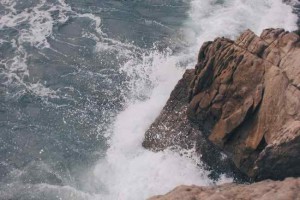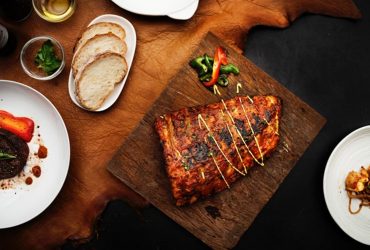Having passed through the Russian border control without issue, we breathed a sigh of relief and snuggled into the first class bunks we had treated ourselves to for this journey. We had read that the Russia to Mongolia border crossing can sometimes take up to eight hours, so we were very surprised to find Mongolian immigration knocking on our door twenty minutes later. Following one more search of our cabin and after a rather stern lady immigration officer had had a good look at Ross (he had just had a haircut and clearly looked suspicious), we received our stamps into Mongolia and the train rumbled off towards Ulaanbaatar, the Mongolian capital.
 We arrived in Ulaanbaatar at six thirty in the morning, much to our surprise as we had thought we would be arriving about six hours later. Up until now, all the trains we had caught had been operating on Moscow time, but of course as soon as we had entered Mongolia, the train began operating on Mongolian time, so we had skipped forward six hours when we crossed the border. So, slightly disoriented we alighted the train into the bright Mongolian sunshine and after a long wait in the central square and a bakery, we headed to our hostel.
We arrived in Ulaanbaatar at six thirty in the morning, much to our surprise as we had thought we would be arriving about six hours later. Up until now, all the trains we had caught had been operating on Moscow time, but of course as soon as we had entered Mongolia, the train began operating on Mongolian time, so we had skipped forward six hours when we crossed the border. So, slightly disoriented we alighted the train into the bright Mongolian sunshine and after a long wait in the central square and a bakery, we headed to our hostel.
On our travels we have stayed in a huge variety of places, from bamboo huts to salt hotels, but never had we stayed in a hostel where so many people were squashed into such a small flat. A large Mongolian family, an eight bed dorm and a double room all in a small apartment, all sharing one bathroom with no lock. Thankfully, we had booked the one and only double room, so after Grandma had kicked out another British couple (sorry Kate and Ross) we settled in. Somehow, despite the lack of space, the hostel worked and it was a very sociable place where we met other backpackers to take a couple of tours with, the first to The Terelj National Park just for a day and the second an eight day trip deep into the Gobi 
Mongolia had always been a country we had planned to pass through on our way from Russia to China, but we hadn’t really given it a lot of thought. The capital is a modern, rapidly developing city, but those who live in the countryside live a predominantly nomadic life, moving their ger camps (yurts to us) depending on the season. Mongolia is the most sparsely populated country on earth, so the countryside is wonderfully remote and wild, but also not very accessible to your average poorly prepared backpacker. In order to independently explore Mongolia, we felt we would need our own wheels and some serious equipment (a bit more than just a spork for example), so we decided to leave the transport and planning to the professionals and see Mongolia on a tour.
So after a taster of things to come from our day trip to the Terelj National Park and having been told horror stories of flies laying their eggs in human eyes by our kind fellow hostel companions, we set off for the Gobi in a very robust looking Russian van, which had been blessed with milk, a Mongolian tradition when anyone is embarking on a long journey. Our companions for the trip were to be driver and chequers champion Oogi, guide Undra and the British couple, Kate and Ross, who seemed to have forgiven us for kicking them out of their double room.


